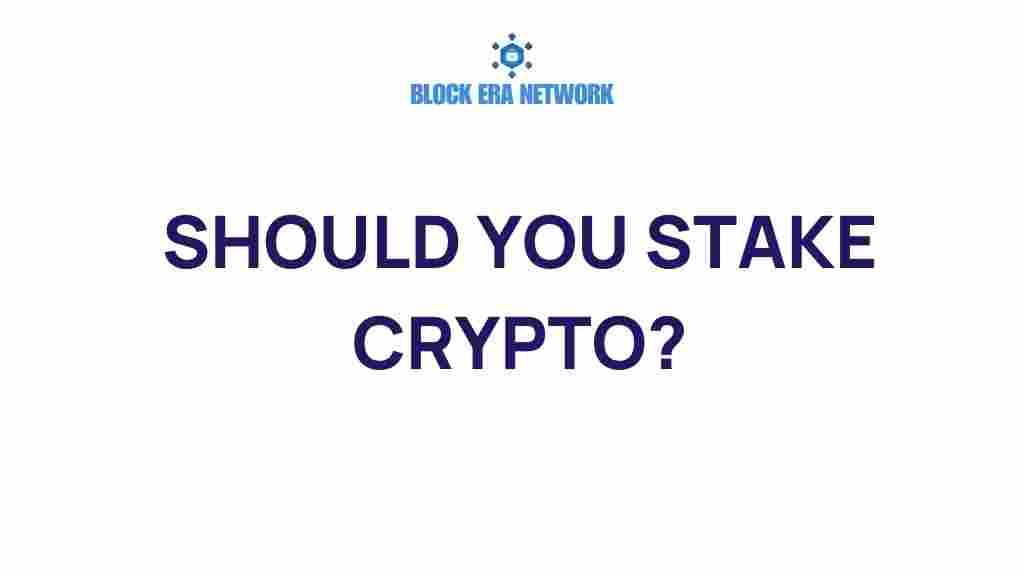What is Staking?
Staking is a popular method in the cryptocurrency world that allows investors to earn rewards by participating in the proof-of-stake (PoS) consensus mechanism. Unlike traditional mining, *staking* involves locking up your crypto assets in a blockchain network to support its operations, validate transactions, and secure the network.
This process not only helps maintain blockchain security but also offers participants an opportunity to earn passive income in the form of additional cryptocurrency. However, before you dive in, it’s essential to understand the potential rewards and risks involved.
How Does Staking Work?
To grasp the mechanics of staking, let’s break it down into simpler steps:
- **Locking Assets:** Investors deposit their cryptocurrency into a staking pool, effectively locking it up for a specific period.
- **Supporting the Network:** The staked assets help validate new transactions and add blocks to the blockchain.
- **Earning Rewards:** In return for their participation, stakers receive rewards, typically in the same cryptocurrency they have staked.
For instance, Ethereum (ETH) transitioned from a proof-of-work (PoW) to a proof-of-stake (PoS) model with Ethereum 2.0, allowing ETH holders to stake and earn rewards.
Popular Cryptocurrencies for Staking
- Ethereum (ETH): A widely-used blockchain with robust staking rewards.
- Cardano (ADA): Known for its sustainable and efficient staking model.
- Polkadot (DOT): Offers high flexibility and excellent yields for stakers.
- Solana (SOL): A fast and scalable blockchain with competitive staking rewards.
Why Stake Crypto? The Potential Rewards
Staking offers multiple benefits that attract investors looking to maximize their crypto holdings. Here are the key rewards:
- Passive Income: By staking, you earn additional cryptocurrency, similar to earning interest in a traditional savings account.
- Network Contribution: Staking directly supports the blockchain’s security and functionality.
- Compounding Effect: Reinvesting your staking rewards can lead to exponential growth in your portfolio.
To further understand the benefits, explore our detailed guide on crypto investment strategies.
What Are the Risks of Staking?
While staking offers notable advantages, it’s not without risks. It’s crucial to weigh these risks carefully before committing your assets:
- Lock-Up Periods: Your assets are locked during the staking period, making them inaccessible.
- Market Volatility: The value of your staked assets may decrease due to market fluctuations.
- Validator Risks: If you stake through a validator that operates poorly, you might incur penalties or lose rewards.
- Hacking Threats: Staking on platforms with weak security measures can expose your funds to cyber attacks.
For insights on minimizing risks, consider external resources like CoinDesk.
How to Start Staking
Ready to stake? Follow this step-by-step process to begin your staking journey:
1. Choose a Cryptocurrency
Select a cryptocurrency that supports staking, such as Ethereum, Cardano, or Polkadot. Consider factors like expected rewards, lock-up periods, and network stability.
2. Decide on a Staking Method
There are two primary ways to stake:
- Staking on an Exchange: Platforms like Binance and Coinbase offer user-friendly staking options.
- Using a Wallet: Wallets like Trust Wallet or Ledger allow you to stake directly, often with higher rewards.
3. Lock Your Assets
Transfer your cryptocurrency to the staking platform or wallet and confirm the staking process. Be sure to review the terms, such as lock-up periods and expected yields.
4. Monitor Your Investment
Track your staking rewards and network performance regularly. Reinvest your rewards to benefit from compounding effects.
Troubleshooting Common Staking Issues
If you encounter issues while staking, here are some common problems and solutions:
- Rewards Not Showing: Ensure you’ve completed all staking steps correctly and check for minimum staking thresholds.
- Validator Performance: Research your validator’s performance to avoid penalties due to missed blocks.
- Security Concerns: Use reputable platforms with robust security measures to safeguard your funds.
Conclusion: Is Staking Right for You?
Staking is an excellent way to earn passive income while supporting blockchain networks. However, it’s essential to balance the potential rewards with the inherent risks. By choosing reputable platforms, diversifying your investments, and staying informed, you can make the most of staking opportunities.
For further reading, explore our article on beginner-friendly crypto tips to deepen your understanding of the crypto world.
This article is in the category and created by Block Era Network Team
